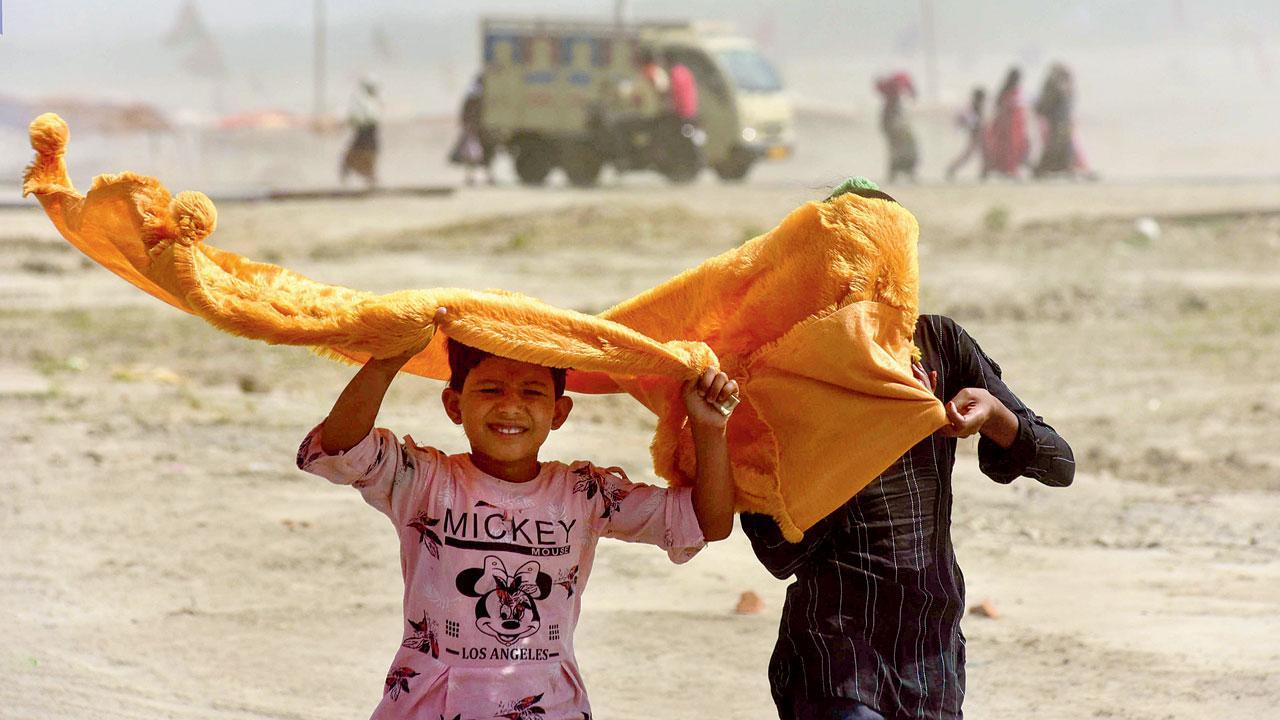The study, published in the ‘PLOS Climate’ journal at a time when several states are already in the throes of rising temperatures, points out that India currently uses a national Climate Vulnerability Indicator (CVI) to measure climate vulnerability and make plans for the adaptation

Children use a cloth to shield themselves from the scorching heat at Sangam in Prayagraj, UP, on Tuesday. Pic/PTI
Almost 90 per cent of Indians are more vulnerable to public health issues, food shortages and increased risks to deaths due to the deadly heat waves fuelled by climate change in 2022, research by the University of Cambridge revealed on Thursday.
ADVERTISEMENT
The study, published in the ‘PLOS Climate’ journal at a time when several states are already in the throes of rising temperatures, points out that India currently uses a national Climate Vulnerability Indicator (CVI) to measure climate vulnerability and make plans for the adaptation.
The CVI includes different socioeconomic, biophysical, institutional, and infrastructural factors but it doesn’t have a physical risk indicator for heat waves, which it warns is a key missing factor that would help policymakers consider how extreme heat actually impacts the Indian population.
Also Read: Same-sex marriage: People moving away from notion of having male child, says SC
“A heat stress measure which identifies the impacts and the parts of India where the population is most vulnerable to recurring heat waves would help to make state Heat Action Plans being created across India more effective,” said the report’s first author Dr Ramit Debnath, Cambridge Zero Fellow at the University of Cambridge. “So, we could figure out how extreme heat really affects people and in which parts of the country,” he said.
It suggests that the CVI underestimates the main risks and threats of heat waves to the Indian population because it does not include any kind of heat stress measure. This missing element also makes it harder to identify areas of the country, like Delhi and other larger urban areas that are most vulnerable. They then compared India’s progress on its UN Sustainable Development Goals (SDGs) over 20 years between 2001 and 2021 with extreme weather-related deaths during that period.
Results showed that India’s global ranking according to the United Nations SDG has gone down in the past two decades because it hasn’t met 11 of the 17 UN Sustainable Development Goals, all of which were important for SDG 13 (Climate Action). Previous studies have shown that India’s frequent heat waves are a growing burden on its economy and public health resources.
90%
Population at increased risk of food shortages, deaths
This story has been sourced from a third party syndicated feed, agencies. Mid-day accepts no responsibility or liability for its dependability, trustworthiness, reliability and data of the text. Mid-day management/mid-day.com reserves the sole right to alter, delete or remove (without notice) the content in its absolute discretion for any reason whatsoever
 Subscribe today by clicking the link and stay updated with the latest news!" Click here!
Subscribe today by clicking the link and stay updated with the latest news!" Click here!







